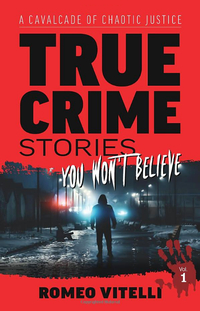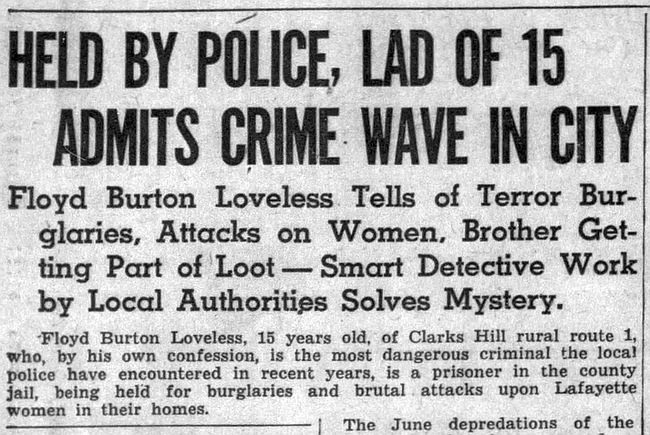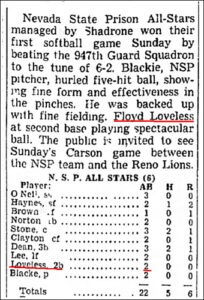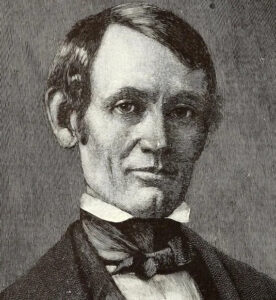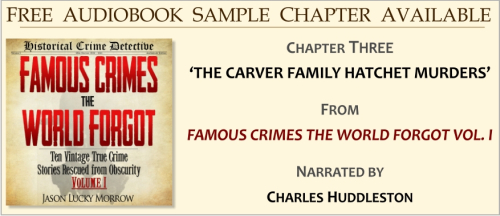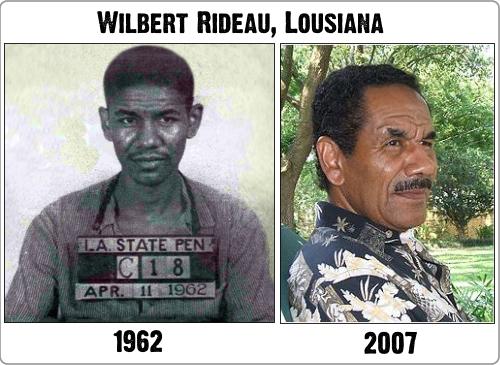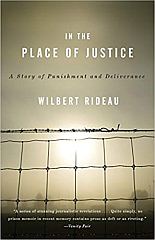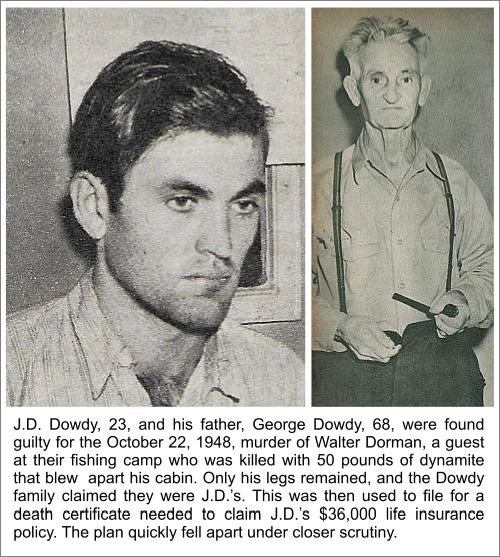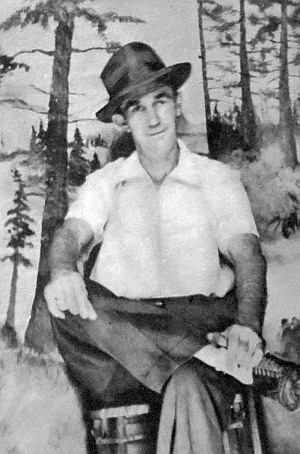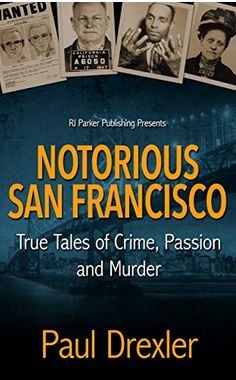Hobocidal Maniac Lloyd Gomez Killed Nine Men in 15 Months
Tap or click on a thumbnail for pop-up image gallery. Hover mouse middle, right side for arrow.
October 15, 1953
San Quentin Prison, California
Six hundred and thirty days after he confessed to California authorities to murdering nine men between 1950 and 1951, Lloyd Gomez was about to get what he wanted: put out of his misery.
He hated life. During his twenty-nine years, the constant struggle to survive had worn him down to the nub. It had done bad things to him and he had done bad things to it. His confession was a suicide. He didn’t care anymore. Get it over with.
For the past thirteen years, when he wasn’t in prison or jail, young Gomez was what polite folks would call an itinerant farm worker, picking fruit or vegetable crops when in season. In between those seasons, his nomadic lifestyle riding freight cars up and down California labeled him a hobo. Today, they might call him a bum.
When not riding freight cars, he lived as a hobo—buying food if he had money, stealing some if he didn’t. Eventually, he killed nine men to get money. If he needed that money to eat or not, is up for debate.
During his lifetime, many of the larger cities in California had encampments of hobos that were a little community unto themselves, with shelter, food, and alcohol shared between them. Called ‘hobo jungles’ by many, these campsites were always outside city limits, near railroad tracks or rail yards, and near a river, lake, or pond if possible.
The Nevada born Gomez was the son of a Shoshone woman and a Mexican father. His mother died when he was young and his father was a strong influence on him during his early years, but not a good one. Gomez had a stoic personality, which never betrayed what he was thinking. If he did speak, more often than not it was to answer a question. Before he replied, Gomez would look at something else, gather his thoughts, and answer in a calm voice.
Behind his quiet demeanor and calm voice, however, was a hobocidal maniac who bashed in the heads of eight middle-aged men, which netted him a total of $62.26. The ninth man he killed, the one for which he would be executed for the following day (10/16/53), died a different sort of way.
Since his arrival to San Quentin’s Death Row on June 10, 1952, Gomez never had a visitor and no one ever wrote to him. Despite numerous requests for an interview from newspaper and radio reporters, he always turned them down. But on the night before his October 16, 1953 execution, Gomez made an exception and agreed to an interview with staff reporter Stanley Wilson from the Sacramento Bee.
Wilson was permitted to sit with Gomez in his death cell a few hours before midnight. Just outside his cell, a curtain obscured his view to the apple green octagonal gas chamber. When Wilson asked Gomez if he was scared of what waited for him just behind that curtain, his nonchalant reply was typical for the man.
“Scared? Naw, I ain’t scared.”
1939 – 1951
The Mystery of the Hobo Jungles
In 1939, with a fourth grade education and an IQ of 61, seventeen-year-old Gomez left his home in Lincoln County, Nevada, to explore California by riding freight cars. From the start, he didn’t seem to fare-to-well in the hobo lifestyle. When he wasn’t picking crops, he was loafing and like most loafers, he got into trouble. Between 1939 and 1941, he was arrested several times for minor offences including vagrancy, for which he served a thirty-day jail sentence.
Another arrest soon followed in January 1942 when Sacramento County deputies held him for a few days for suspicion of dodging the draft. He was soon released for unknown reasons only to be arrested two months later in Nevada for highway robbery. The way he told it to investigators and a Sacramento Bee reporter ten years later, was that in March 1942, he had acquired a revolver, and he was determined to use it.
“It was near my home in Nevada, (Pioche). It was on the highway and the fellow had a car. I went up to him and pointed the gun at him. I got nearly $1,000.”
But that’s not what happened. Gomez was lying. According to a one-paragraph story that appeared in the April 27, 1942 edition of the Reno Gazette, the offense was attempted robbery. The charge against him stated he threatened the life man of a named Bruce Olson and took his guns and ammunition. He was sentenced to serve a minimum of two and one-half years to twenty-years in the Nevada State Penitentiary.
The Gazette’s short report never mentioned if Gomez had used a firearm, nor anything about $1,000 cash taken from the victim. A thousand dollars cash back then is the same as $16,000 today, and most people don’t carry that much money with them, then, or now.
If he was lying, it’s not clear why.
Nineteen months later, young Gomez was joined by his father, Manuel Gomez, who received a life sentence for the 1943 New Year’s Day murder of Jesus Garcia in Carlin, Nevada. Both men, along with several others, were part of a railroad crew working at the time in the small town twenty-three miles west of Elko. Witnesses told deputies they saw Gomez beating Garcia over the head with a pick-axe handle. They did not know any of the details that led to the fight.
Señor Gomez claimed he killed Garcia in self-defense after Garcia tried to stab him with a butcher’s knife.
Eleven months later in November, an Elko County jury disagreed and found him guilty of first-degree murder. However, instead of recommending to the judge that he should die in Nevada’s famous gas chamber (the first in the country) they recommended a life sentence and in early December, father and son were reunited in prison. If he told his son his side of the story, and using a pick-axe handle to bash in Garcia’s head, it apparently made an imprint on the young man’s mind for crushing heads with repurposed caveman weapons became his modus operandi for the murders he would commit seven years later.
After serving four years on the attempted robbery charge, young Gomez said goodbye to his father when was released from prison in May 1946 due to overcrowding. Freedom gave young Gomez the opportunity to grow his rap sheet and a few months later, he was arrested and released in San Bernardino, California, for investigation of strong-arm robbery.
He dodged that bullet but caught another one on January 12, 1947, when he broke into the American Can Company’s Sacramento warehouse where he was caught by the night watchmen breaking into a candy vending machine.
A short article about his arrest appeared in the Sacramento Bee the following day.
“The police reported that Lloyd Gomez, a Mexican transient, who was booked yesterday for a burglary of the American Can Company, has admitted to burglaries in Los Angeles, Madera, Stockton, San Joaquin County, and in a sheep camp near the North Sixteenth Street Bridge in North Sacramento.”
He received a seven-month sentence to the county road camp for burglary.
Two patterns appear in that one-paragraph report that would mirror the future of his short life: being arrested in Sacramento, and spontaneous confessions. In fact, that was just the second time he was arrested in Sacramento.
The third time he was arrested in Sacramento came in May 1948. Convicted of assault, Gomez was sent back to the Sacramento County road camp to serve a sixty-day sentence building roads for the county. For some unclear reason, he walked away from the road crew a few weeks before his time was completed. Considering this fact, it’s probable he would have only left the road crew if his life was in danger.
But freedom and Lloyd Gomez were not a good match and that July (the same time he would have completed his road crew sentence) he was arrested in Las Vegas for counterfeiting and sentenced to serve one year and one day at the McNeil Island Federal Prison Penitentiary in Washington state.
After his release from McNeil Island in July 1949, Gomez stayed out of the law’s reach for more than fifteen months, his longest stretch. During that time, he started killing hobos.
The first one he killed was never identified. Gomez said he was a Native American man in his mid-40s, and he killed him near the railroad yards just outside of Oroville, California during the summer of 1950. He said the man had a bottle of wine and wanted to take him to his shack.
“When he was ahead of me, I picked up a rock and hit him on the head (six times). I got the bottle of wine and five cents.”
The man’s body was found six months later on November 27 one-half mile west of the Western Pacific yard by two pheasant hunters. At the time, the county coroner reported the he had been killed by a large, bloodstained rock found nearby, and that he had been dead for approximately six months. He was never identified.
By the time this discovery was made, Gomez had killed two more men.
On the afternoon of November 11, 1950, Gomez was visiting with John Joe “Cabbage” Kapusta inside his shack in the hobo jungle on the banks of the American River near Sacramento, when forty-three-year-old Warren Hood Cunningham spotted Gomez and charged at him, accusing him of stealing.
“He went after me with two pocket knives,” Gomez told a Sacramento Bee reporter shortly after his confession was released fourteen months later. “Some guy down there had squealed on me and told him I stole his two cans of beer about four days before that.
“I ran. Boy, how I ran, and he was still after me. I got away and I waited about three hours, I guess. I got mad. I got so mad I couldn’t stop. I had a gun buried over by the American River and I went back to his place with it.”
The gun was a .22 caliber rifle. From the tree line 60 to 100 feet away, he spotted Cunningham sitting by his shack with Cabbage Kapusta where the two were listening to a radio. Gomez took aim, fired three shots, and watched as Cunningham fell over. He then approached Cunningham and shot him three more times.
Kapusta who was nearly blind, couldn’t describe to police what the shooter looked like.
“I knew what I had done,” Gomez continued. “I ran. I went to Fresno. Then to Los Angeles. The idea was to go somewhere. Just keep going.”
Gomez did go to Fresno, and eventually Los Angeles, but between those two cities is the small town of Mojave where he bludgeoned Earl Franklin Woods to death with a stone on November 19, just eight days after he killed Cunningham. Gomez had asked him for a match and the fifty-year-old “grouchily refused.”
Gomez didn’t like his tone. He only found three cigarettes in the dead man’s shirt pocket.
A few days after murdering Woods and a few miles from Los Angeles, Gomez was arrested by Burbank city police for vagrancy. He served thirty days. Before his arrest, he had dismantled his rifle and gotten rid of it.
Released in late December, Gomez went for six months without killing anyone. When he did start up again, he killed six men in three months. On May 29, 1951, Gomez found Elmer M. Cushman sitting on an open-top rail car. He picked up a rock, approached without being seen, and beat the man to death with that rock. He pocketed $16.50.
Ten days later, he found an unidentified man sleeping in the tall grass near the railroad tracks by Stockton. Gomez killed him with a rock and a wood plank. Searching through his pockets, he found $20.
On June 22, Gomez was picking peaches near Merced, California when he spotted George Jones walk into the hobo camp there. The sixty-year-old found a spot he liked and began cooking some food. Gomez snuck up behind him and broke his skull with a rock. In the man’s wallet, he found $24.50.
On July 17, Gomez dropped a twenty-pound rock on the head of Arvid Ostlund near the railroad tracks leading out of Roseville. The forty-year-old only had one dollar on him.
His eighth victim was an unidentified man he found sleeping in his underwear one hundred yards from the railroad tracks near Marysville in early August 1951. “I threw sand in his face and hit him with a brick,” Gomez later said. His life was worth 21-cents.
On August 16, forty-six-year-old Roy Chester Hanson was minding his own business when Gomez found him sitting on a railroad car on the Southern Pacific tracks northeast of Sacramento. Hanson was his ninth and final victim. He couldn’t even remember if the man had any money or not.
The murders did not go unnoticed.
In June 1951, two criminal investigators with the California State Department of Justice spotted the pattern. Although the classification of serial killer was more than twenty-years away, they correctly assumed they were looking for one man, a hobo, who was killing other hobos with caveman weapons‒stones and wooden clubs. Looking through their files, they found victims killed in the same manner as far back as 1939.
Shortly after Hanson’s body was found, they publicly announced their investigation and several newspapers, including the Sacramento Bee, dubbed it “The Mystery of the Hobo Jungles.”
Their news release revealed that the murders of a dozen men going back twelve years had seven things in common.
- All of the men were in late middle age,
- had done manual labor,
- and lived alone in hobo jungles.
- Their bodies were found in rail cars, near railroad tracks, or in hobo settlements.
- The victims were struck from behind with clubs or rocks
- and the beatings continued long after death. (Overkill.)
- They ruled out robbery and sex as possible motives and couldn’t piece together the killer’s compulsion other than he was possibly a madman – a maniac.
1951 – 1953
Confession Time
The end of his killing spree came on January 15, 1952, when Gomez was arrested by Sacramento County lawmen for the fourth and final time. The charge, vagrancy. In custody, deputies looked into his record and realized he had walked away from a county road crew back in 1948. He was given a sixty-day jail sentence on the vagrancy charge and would soon be charged for escape.
Nine days later, on January 24, Gomez passed a note to one of the guards that read:
“To Jailer:
“All in California. I killed 1 Indian at Oroville 1951 (it was in 1950). I killed 1 white men (sic) at Marysville. I killed one man at Roseville 51. I killed one man at Stockton. I killed 1 man at Merced. I shot 1 man six time in jungle Sacramento.”
Sacramento authorities contacted the two state investigators who rushed over to partake in the interrogation that soon followed. Their interest was in the twelve men murdered with rocks and clubs over the last thirteen years. Gomez’s initial confession included five of them and with aid of the victim files, he copped to three more, but not the four others they assumed he was responsible for killing. Gomez’s memory wasn’t the best but he did give them enough details for eight of them, which led them to later conclude he was telling the truth.
The bullet-riddled body of Warren Hood Cunningham was not on their list. He was, however, at the top of Sacramento County’s list. The following day, January 25, deputies took Gomez to the ‘jungle’ and there, not far from the riverbank, he pointed to a demolished cardboard shack where Cunningham was sitting when he shot him from 60 to 100 feet away. Of all the men he killed, Gomez remembered every detail of killing Cunningham, which was more than enough to satisfy the district attorney who charged him with first-degree murder that same day.
To back up their case, they found two men who were there: John Joe “Cabbage” Kapusta and Mike Gilbert. They knew Gomez as a man they called, ‘Indian.’ Although Kapusta was nearly blind, he recognized Gomez’s voice and said his general physical description was the same as the man who walked over and put three more bullets into Cunningham.
Gomez’s spectacular confession left investigators and newspaper reporters with two burning questions: why did he do it and why did he confess?
“I got hungry,” he told a San Francisco Examiner writer, who, like many others, asked him the ‘why he did it’ question. “I needed money to eat. I never was mad at the men.”
His food bill was $62.26 and eight dead men. He may have not been mad at them, but he was mad enough at Cunningham to shoot him six times.
When asked by a Sacramento Bee reporter, “How does it feel to voluntarily admit to nine murders?” a “dirty, ragged, unshaven” Gomez, noted for having “slender, strangely smooth hands” cast his “dreamy-like” eyes towards the long jail corridor and said, “in a low, calm voice:”
“I see the same thing every year. Life is no good. Both times I was in prison it was no good—it was tough. I don’t care what happens. Life is bad.”
Later, during that same interview, when asked if he understood what could happen to him, Gomez again turned his head to look at something only he could see, thought for a moment, and in the same low, calm voice replied:
“Maybe it means more time. Maybe it means the gas chamber or electric chair. I don’t care. If they gas me or put me in the electric chair that’s all right. I’m better off dead anyway. I don’t want to live.”
Lloyd Gomez meant what he said. Over the course of the next 631 days of his life, he only appeared to flip-flop once. On the first day of trial, after sitting next to his attorney for twenty minutes during jury selection, he saw an open door, pushed his chair back, and took off running.
He was recaptured before he could get out of the building.
The Interview
On the night of October 15, twelve hours before he was executed, Gomez gave his consent to an interview request by Bee reporter Stanley Wilson.
“The admitted slayer of nine men reclined nonchalantly on his prison cot and replied to questions,” Wilson began after a long introduction to his article. “‘Scared? Nah, I ain’t scared.’
“Gomez. who previously was described as having the mind of a child, was asked if he knew why he was in that particular cell (the death cell where condemned men are places the day before their execution).
“‘Sure. I’m going in there tomorrow,’ he said as he pointed to the green gas chamber where the cyanide pellets soon were to be dropped to end his life.
“‘Have you seen a chaplain?’” Wilson asked.
“No, I don’t want to see no chaplain.”
“Why?”
“I believe the same thing Dad does. He don’t believe in no religion.”
His reply about religion confirmed a statement he made shortly after his confession when he told a reporter he believed in God, but not religion. His dad, sixty-three years old at the time, was still in the Nevada prison where he last saw his son nine years earlier.
It was also the last time he communicated with him.
“Gomez continually blinked his eyes, reminiscent of the manner in which he responded to questioning during his trial,” Wilson continued. “However, he seemingly was unconcerned about his fate today (tomorrow morning). He answered to another question:
“’No, I don’t have any friends, I haven’t written and I haven’t got any letters from any friends or relatives,” Gomez replied. “I don’t want any friends. I don’t need ’em.'”
When Wilson asked him if he thought he had a fair trial, “Gomez reflected for several moments before he repeated the question as though talking to himself.”
“Yeah, I think so. I don’t think the attorneys can do any more.”
When the interview had begun, Gomez was eating his last meal, which consisted of fried chicken, fried potatoes, peas, a tomato and lettuce salad, toast, apple pie and coffee. The food and a warm bed were two things he liked about being incarcerated.
“Am I keeping you up, Lloyd?” Wilson asked after he had finished eating.
“No, I’ll sleep all right tonight. Don’t worry about me.”
“He never seemed to lose his nonchalance,” Wilson wrote near the end of his article.
The man’s indifference to his own fate seemed to bother the reporter, who noted it several times in his story published the following afternoon. In fact, it was made clear to readers in the first and fourth sentence of his article.
“SAN QUENTIN—Lloyd Gomez, 29 year old phantom hobo killer, walked to his death in the San Quentin Prison gas chamber this morning with the same calmness he exhibited during his trial in Sacramento a year and a half ago…
“When the condemned man walked the traditional last mile to the gas chamber, actually only a few steps, he was composed, seemingly alert and showed no emotion. He exhibited his typical and long-standing stoic attitude.”
At 10:12 that morning, Lloyd Gomez was pronounced dead.
It was over with.
– – – – – ### – – – – –


